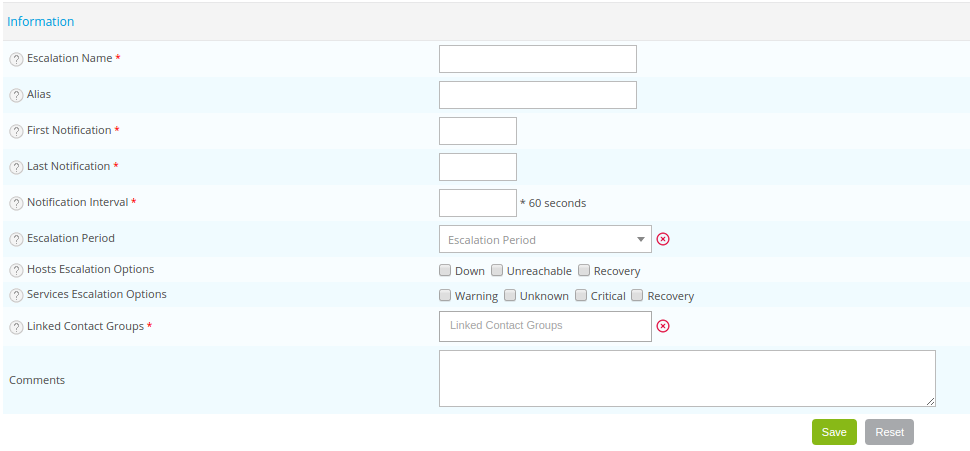Escalation
Definition
Generally, if an alert is triggered, a notification serves to contact one or more contacts (or groups of contacts). In the same way, it is possible to send multiple notifications at regular time intervals.
An escalation of notifications is used to contact various groups of contacts during the notifications process or to change the means of notification (replace mails by an SMS). The definition of a notification escalation to a host, a host group, a service, a service group or a meta-service overwrites the normal configuration of notifications for this object.
Example: a service A is set to send notifications to a group of contacts “A” in case of Not-OK status. These notifications are sent every 5 minutes. If, after a certain number of notifications is sent, the status of the service is still Not-OK, it is possible to contact the individuals of the group of contacts “B” etc…
Escalations of notification are convenient in the situation where level 1, level 2, level 3, etc., support level teams exist within a company. When a problem appears, the level 1 support team is contacted. If, after a certain time,the level 1 team has not succeeded in solving the problem, the level 2 team is alerted, etc.
Principle
Notification escalations allow two things:
- Notifying various contacts according to the number of notifications sent
- Changing the command of notification over time
When notification escalations are used, the retrieval of the list of contacts is a little different:
- A service (or a host) is checked at regular intervals according to the check period defined for it
- If an anomaly occurs (Not-OK status), the service (or the host) goes into the SOFT state
- After the Max Check Attempts is exceeded and if the service (or the host) persists in its Not-OK status, its state changes from SOFT to HARD. The monitoring engine caches the notification number for the service (or the host): i.e. 0.
At each interval or sending of notification to the service (or the host) and until the end of the Not-OK status, the monitoring engine performs the following operations:
- If no notification escalation is defined for the service (or the host) and the current notification number, the notification is processed in the same way as for a normal notification: the monitoring engine uses the notification configuration defined for the service (or the host).
- If a notification escalation is defined for the service (or the host) and the current notification number, the monitoring engine bases itself on the configuration of the escalation to select the contacts to be notified and the mechanism to be used.
- The processing mechanism for a notification is the same as the sending of a normal notification
Configuration
To add a notification escalation, go into the menu:
Configuration > Notifications > Escalations and click Add

- The Escalation Name and Alias fields are used to define a name and an alias for the notification escalation.
- The First Notification field allows us to choose the notification number as of which the group of contacts is alerted.
- The Last Notification allows us to choose the last notification number at which the group of contacts is alerted. If the group of contacts is the last level of the escalation, the value of this field is 0.
- The Notification Interval field defines the notification interval between alerts.
- The Escalation Period field defines the notification time period.
- The Hosts Escalation Options and Services Escalation Options service escalation fields define the statuses of hosts and of services for which the escalation is used.
- Linked Contact Groups defines the group of contacts to be contacted on triggering the escalation.
- The Comments field can be used to comment on the escalation.
Application of the escalation
To select the various objects that will be concerned by this escalation, the Hosts Escalation, Services Escalation, Hostgroups Escalation, Meta Service Escalation and Servicegroups Escalation tabs are used to choose the objects to which the escalations are applied.